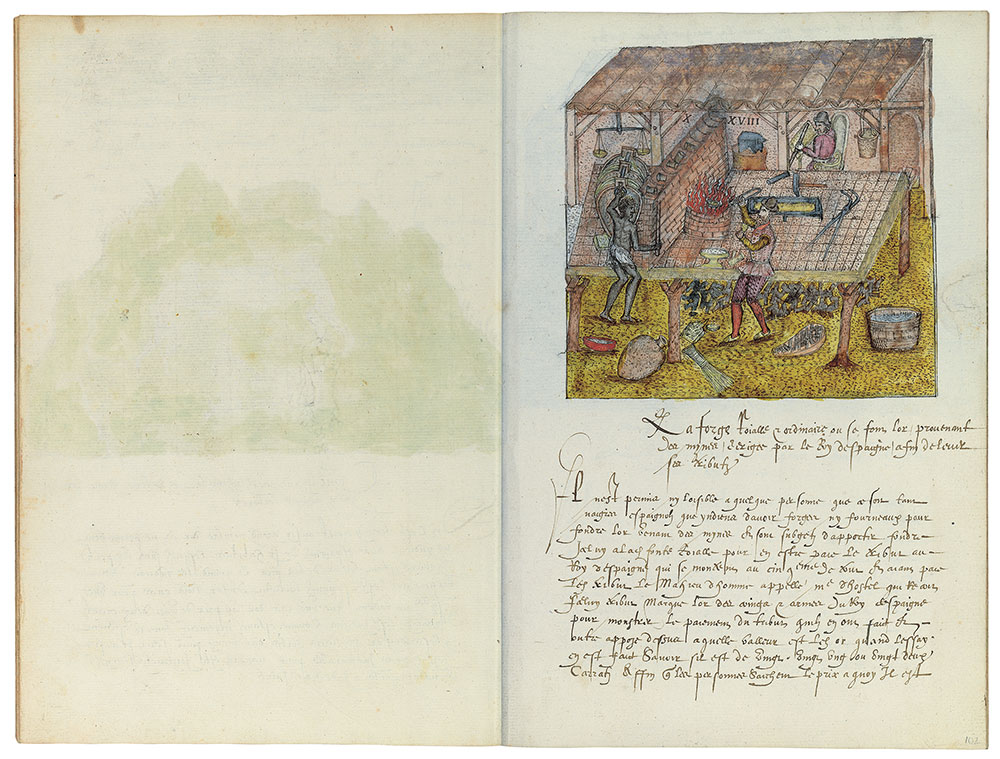
Histoire Naturelle des Indes
Illustrated manuscript
Bequest of Clara S. Peck, 1983
In 1983, The Morgan Library & Museum received, as the bequest of Clara S. Peck, an extraordinary volume whose beautiful paintings and descriptions document the plant, animal, and human life of the Caribbean late in the sixteenth century. Spaniards had already begun to exert influence over the indigenous people of the area when explorers from England and France arrived, among them Sir Francis Drake. The volume, known as the Drake Manuscript and titled Histoire Naturelle des Indes when it was bound in the eighteenth century, gives us a wonderful picture of daily life at the time of Drake's many visits to the region. Although Drake's connection to the manuscript is uncertain, he is mentioned on more than one occasion by the authors. Drake himself is known to have painted, but none of his work survives.
Contents: 199 images of West Indian plants, animals and human life, with accompanying manuscript captions written in late sixteenth-century French.
Medium: Most of the illustrations consist of a black chalk underdrawing and a combination of pen and brown ink with watercolor; on some images selected areas have also been glazed with a gum.
Binding: Bound or rebound in brown leather in the late 18th century.
Pagination: Penciled folio numbers (1–125) in lower right corner of each page were added by The Morgan Library & Museum. Folios 92v–93, 93v–94, and 95v–96 are fold-out leaves.
La Forge Roialle Et Ordinaire Ou Se Font Lor Prouenant Des Mynes | Eerigee Par Le Roy Despaigne | A Fin Deleuer Ses Tributz (The Royal or Ordinary Forge Where the Gold Coming from the Mines is Made. Erected By the King of Spain to Levy His Tribute)
It is not permitted nor legal for anyone, whoever it is, negro, Spaniard, or Indian, to have a forge or furnace to smelt the gold coming out of the mines. They are obliged to bring it to the Royal Forge to pay the tribute to the King of Spain which amounts to a fifth of everything. Having paid the tribute to the Major-domo, called Maître d'hôtel, who receives the tribute, he stamps the gold of the coins with the arms of the King of Spain in order to show that the tribute has been paid and adds above the value of the gold after it has been assayed, namely whether it is worth twenty, twenty-one, or twenty-two carats so the people know its price.
